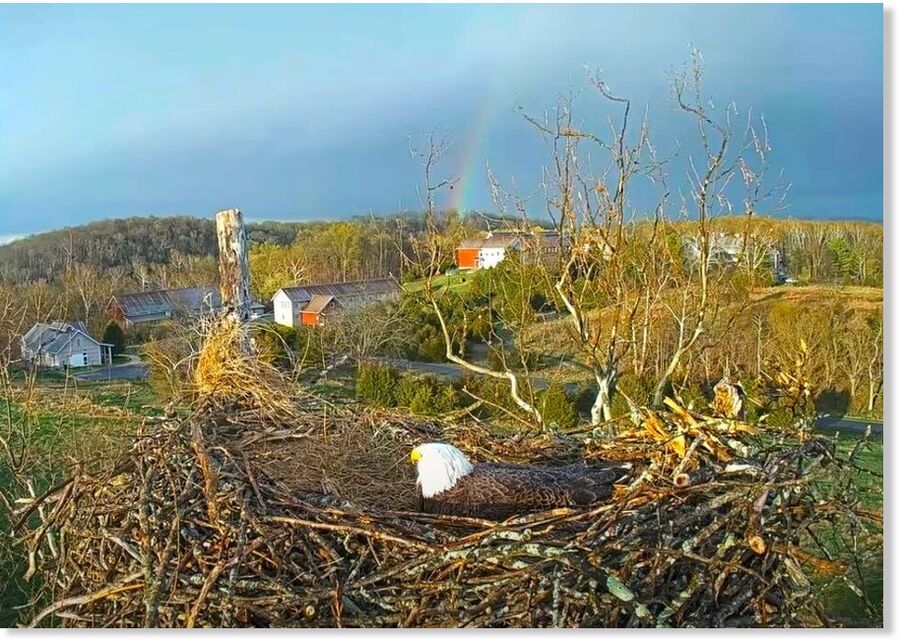
© JENNA DORSEY / U.S. FISH AND WILDLIFE SERVICEA female bald eagle on U.S. Fish and Wildlife Service's National Conservation Training Center in Shepherdstown, West Virginia, with a rainbow in background, earlier this season.
In a tragic turn of events, two baby bald eaglets that hatched this week at the U.S. Fish and Wildlife Service's National Conservation Training Center in Shepherdstown, West Virginia, were killed by their bald eagle father, who ate them.
One of eaglets passed away Monday night, while the other died shortly after being born on Friday, the National Conservation Training Center said.
"While this behavior was unusual, there's much we don't know," NCTC said in a social media post Friday. "This nest has brought us joy for years, raising countless eaglets for two decades. While this year's nesting season was not easy, it has offered a rare glimpse into the complexities of nature and the challenges that bald eagles face."
A spokesperson of the U.S. Fish and Wildlife Service confirmed the death of the second hatchling to USA TODAY Friday and explained that such incidents, though rare, are not unusual, especially among birds of prey. The spokesperson added that the population of the bald eagle, which is also the national symbol of the United States, has continued to soar, with an
estimated 316,700 individual bald eagles in the lower 48 states.


Comment: A month ago: Farmer killed in gaur attack in Tamil Nadu, India